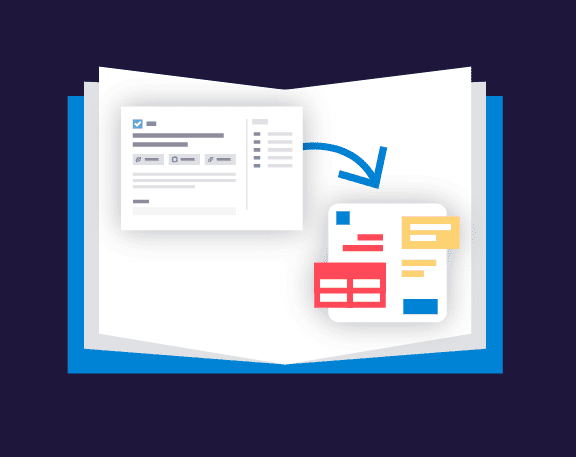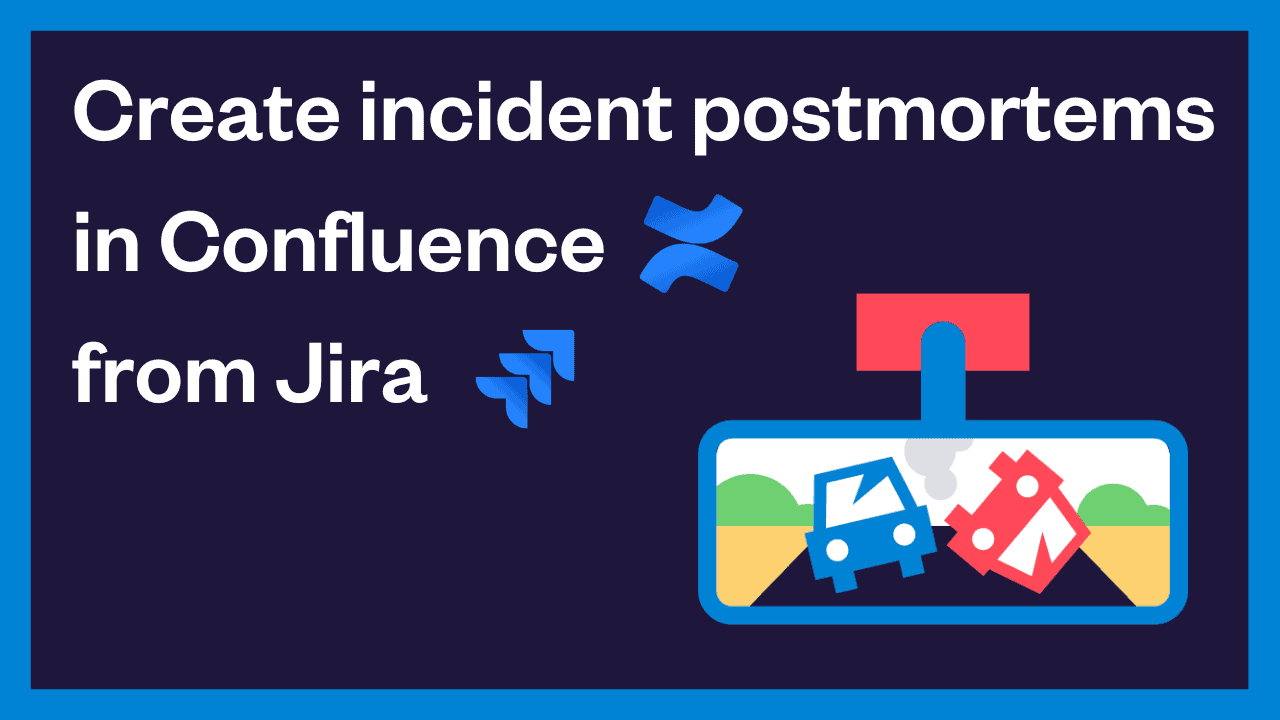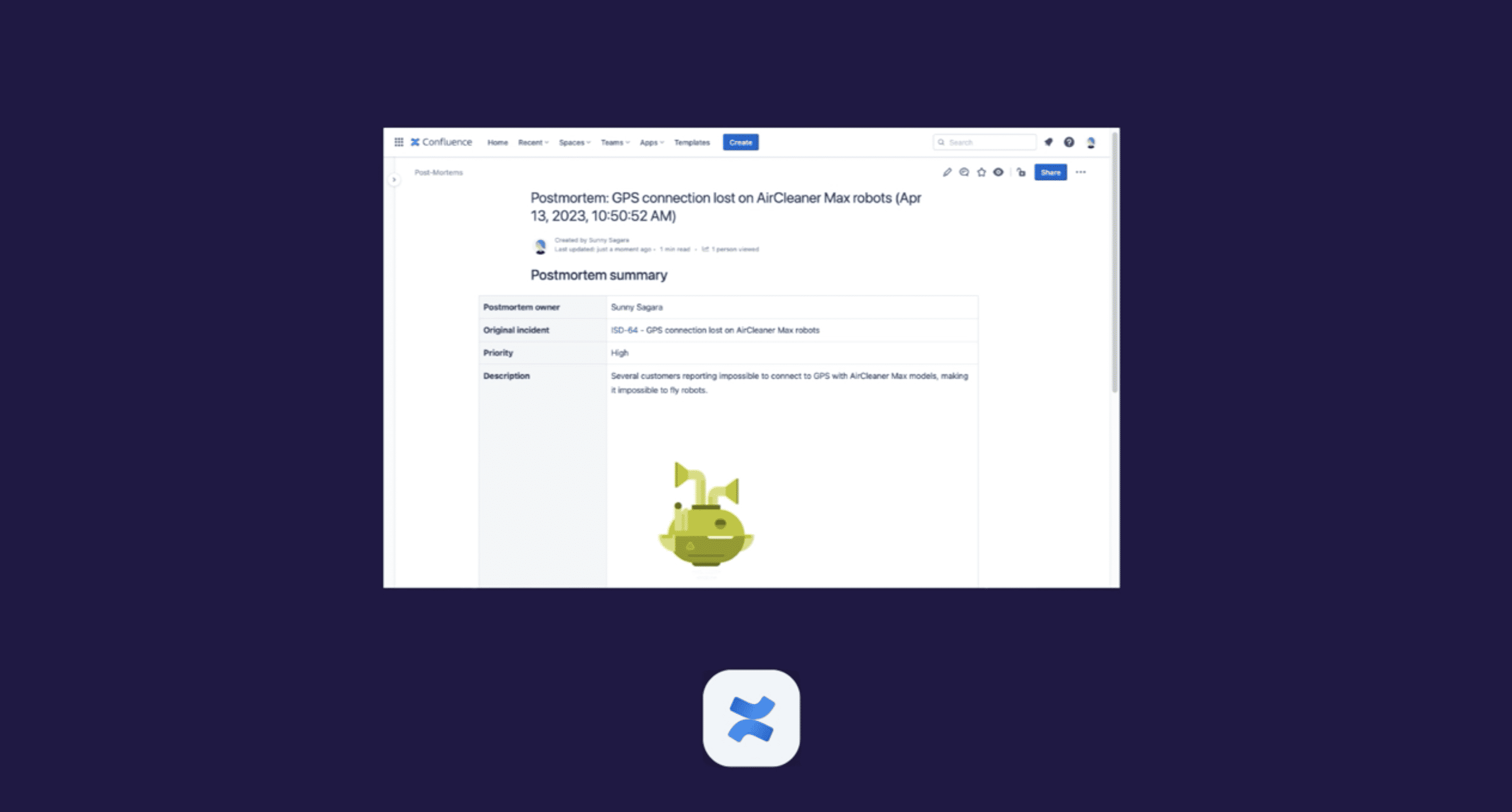Incident Postmortems #Elements Publish
Use case benefits
Leverage the information from your incidents tracked in Jira by publishing it to Confluence
Elements Publish recipes allow you to pre-configure the parent page, design a template that mixes static content and details from your Jira issue, and link to the new page in the Jira incident. With everything prebuilt, Jira users can focus on the root cause analysis, not copying and pasting.
Inject information from Jira onto the post-mortem page: issue details, field values, attachments, and even labels. Get the layout you want by inserting issue details into tables or adding panels, action items, or statuses. You can even use issue details or field values to dynamically set the page title.
Elements Publish recipes can be triggered manually by Jira users, added as a post-function to a transition, or integrated into an Automation rule. Fine-tune who can create the post-mortem by adding user conditions based on user groups or identify.

Tutorial
Make your team’s processes even more efficient by inserting Jira data into Confluence templates
If your team is already using Confluence templates which meet their needs, there is no reason why that should change. Learn how you can embed issue data from Jira into Confluence templates with no coding or webhooks to configure.

Have questions about inserting Jira fields into Confluence templates?
FAQ
What fields can I insert on Confluence templates?
There are over 20 different types of fields you can insert. You can find the full list of fields you can copy from Jira to Confluence on our documentation.













